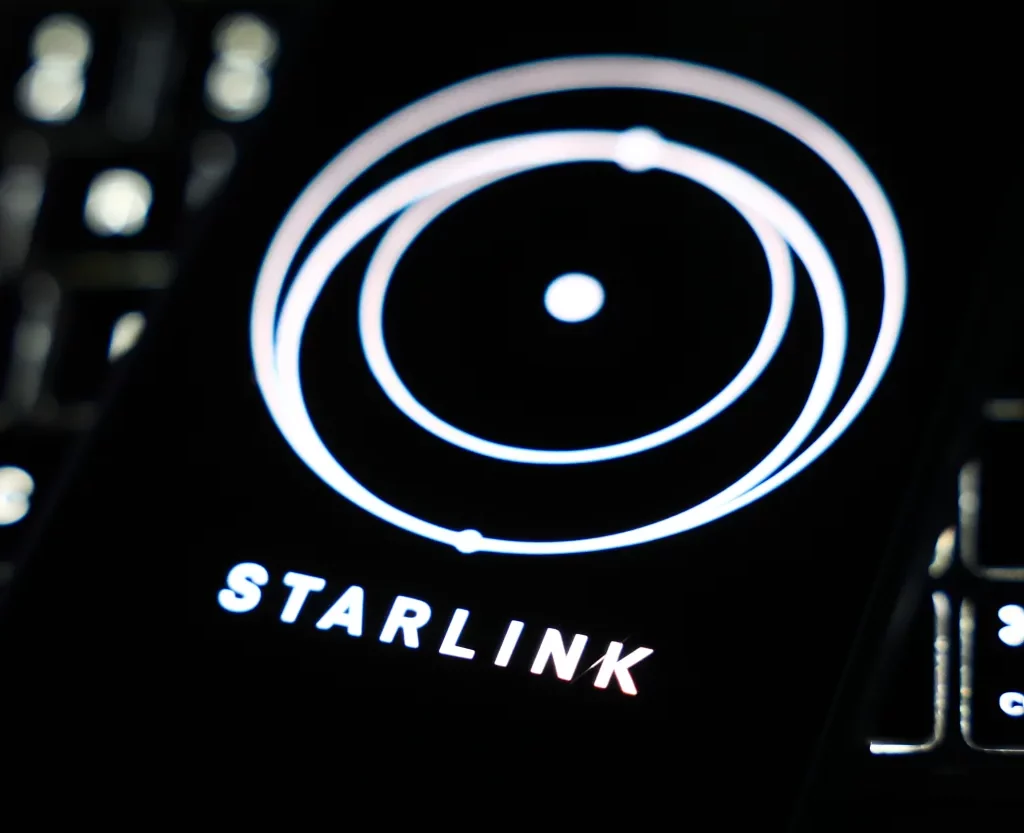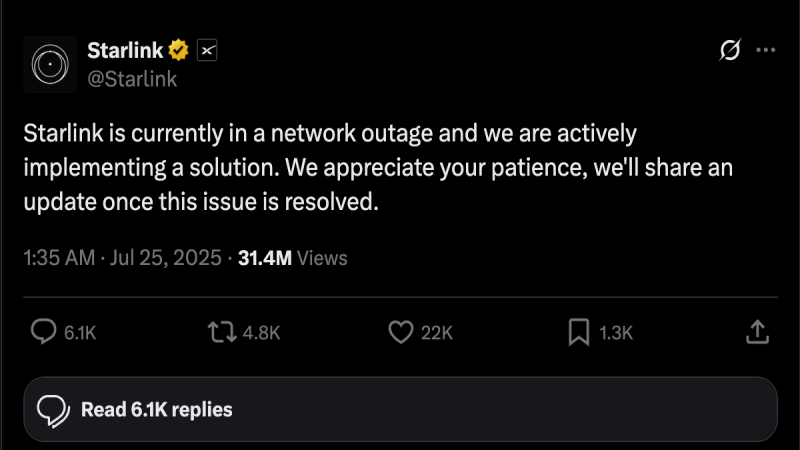
🚨 What Just Happened to Starlink?
Elon Musk’s Starlink, a widely popular satellite internet service, experienced a major network outage on Thursday, leaving tens of thousands without internet for hours. What made this timing so striking? The outage occurred just after T-Mobile launched its new T-Satellite service, which also runs on Starlink’s infrastructure.
Coincidence? Or competition clash?
While Starlink is known for bringing internet to remote corners of the world, this sudden blackout has stirred questions about reliability—especially when users rely on it for work, safety, and communication.
🛰️ Starlink and T-Mobile: A Quick Primer
Before we dive into the outage details, let’s understand the players:
- Starlink is a satellite internet service operated by SpaceX, founded by Elon Musk. It aims to offer fast, global internet using low-Earth orbit (LEO) satellites.
- T-Mobile’s T-Satellite service, powered by Starlink, just went public. It promises mobile coverage “where no tower can reach”—think rural areas, mountains, deserts, or even oceans.
With these two systems tied together, you’d expect a seamless launch. But that’s not how Thursday played out.
📉 The Timeline of the Starlink Outage
Let’s break down the sequence of events that unfolded:

- Early Thursday: T-Mobile publicly rolls out its T-Satellite service, promoting global connectivity.
- Around 4:30 p.m. ET: Elon Musk posts on X (formerly Twitter) apologizing for a “network outage,” assuring followers that service would be restored shortly.
- Peak Downtime: Over 60,000 users reported issues on Downdetector, a platform that tracks outages in real-time.
- 6:23 p.m. ET: Starlink VP Michael Nicolls announced that service had “mostly recovered” after approximately 2.5 hours of downtime.
- 8:30 p.m. ET: Full service reportedly restored.
While outages aren’t unusual in the tech world, the proximity of this one to a major product launch drew extra attention.
🧠 So… Why Did Starlink Go Down?
Starlink has yet to provide a detailed explanation. But such outages can occur for several reasons:
- Network congestion
As Starlink gains popularity (and more satellites are added), demand may outpace bandwidth in certain areas. - Infrastructure updates
It’s possible that the launch of T-Satellite led to back-end modifications that temporarily caused disruptions. - Technical faults
Issues in ground stations, software bugs, or satellite malfunctions could all trigger a wide-scale problem.
Until we get official word, we can only speculate. But one thing’s clear: customers were not pleased.
📲 T-Mobile’s T-Satellite: A Smooth Start?
Ironically, while Starlink was down, T-Mobile’s T-Satellite service remained fully operational.
A spokesperson from T-Mobile stated:
“The T-Satellite service is operating normally with no network impacts or outages.”
Ouch. That likely added salt to the wound for many Starlink users watching their internet blink off while T-Mobile’s new offering sailed smoothly into the market.
📊 Starlink’s Growing Pains: A Victim of Its Own Success?
Recent research shows that Starlink’s performance dips as user numbers grow. This is often referred to as the congestion paradox—more users = more strain.
While Starlink has helped bring connectivity to places previously unreachable, its reliability is now under scrutiny.
And this isn’t the first time a Musk-run platform hit a wall.
- X (formerly Twitter) has experienced several outages over the past year.
- During a May disruption, Musk admitted that “major operational improvements” were needed.
If both platforms under his control are stumbling under scale, are we seeing a pattern?
💬 Public Reaction: “Elon, What’s Going On?”
Social media users flooded platforms like X and Reddit with frustration:
“I switched to Starlink because I live off-grid. It’s been a blessing—but if this keeps happening, I’ll have to reconsider.”
— @homesteadrick
Others saw the humor:
“The satellites must be watching Netflix. Too much traffic in space.”
— @techdad
Regardless of tone, the sentiment was clear: Starlink users expect better.
📉 What Does This Mean for the Future of Starlink?
While this outage may be temporary, the reputational impact could linger. With new players like Amazon’s Project Kuiper and OneWeb entering the satellite internet space, Musk can’t afford to slip.
Reliability will be key to retaining customers—especially those who use Starlink for critical communication in emergencies or business.
Moreover, with T-Mobile now offering direct-to-phone satellite connectivity, users may choose that convenience over mounting another dish on their roof.
🧩 What Elon Musk Had to Say
In his usual style, Musk kept his response brief:
“Service will be restored shortly.”
Though appreciated, this left many users wanting more transparency.
As one Reddit user posted:
“A multi-billion-dollar satellite network should offer more than just a tweet when things go wrong.”
🔍 The Bigger Picture: Connectivity Wars Are Heating Up
This outage is more than a blip—it’s a reminder that the space-based internet race is heating up fast.
Here’s who’s on the launchpad:
- Starlink (SpaceX): The current leader, but facing growing pains.
- Project Kuiper (Amazon): Backed by Jeff Bezos, expected to launch soon.
- OneWeb: UK-based, aiming to cover underserved regions.
- T-Mobile x Starlink (T-Satellite): A hybrid model showing early promise.
Each aims to be the go-to internet solution for rural and remote users worldwide.
And with government agencies, airlines, cruise ships, and even militaries expressing interest, the stakes couldn’t be higher.
📸 Image Suggestion (with Alt Text)
Image Idea: Starlink satellite dish with a red “Connection Lost” signal.
Alt Text: “Starlink outage warning displayed on user screen during internet disruption.”
🔗 Helpful External Resources
- Downdetector – Starlink Outage Reports
- Official T-Mobile T-Satellite Launch Announcement
- SpaceX Twitter (X) Feed
✅ Final Thoughts
The Starlink outage following the T-Mobile satellite service launch couldn’t have come at a worse time. While connectivity was eventually restored, this incident underscores a critical truth: infrastructure at scale must match its promises.
With the satellite internet wars underway, users now have choices. If Starlink doesn’t improve its uptime and transparency, it may lose the lead it worked so hard to build.
